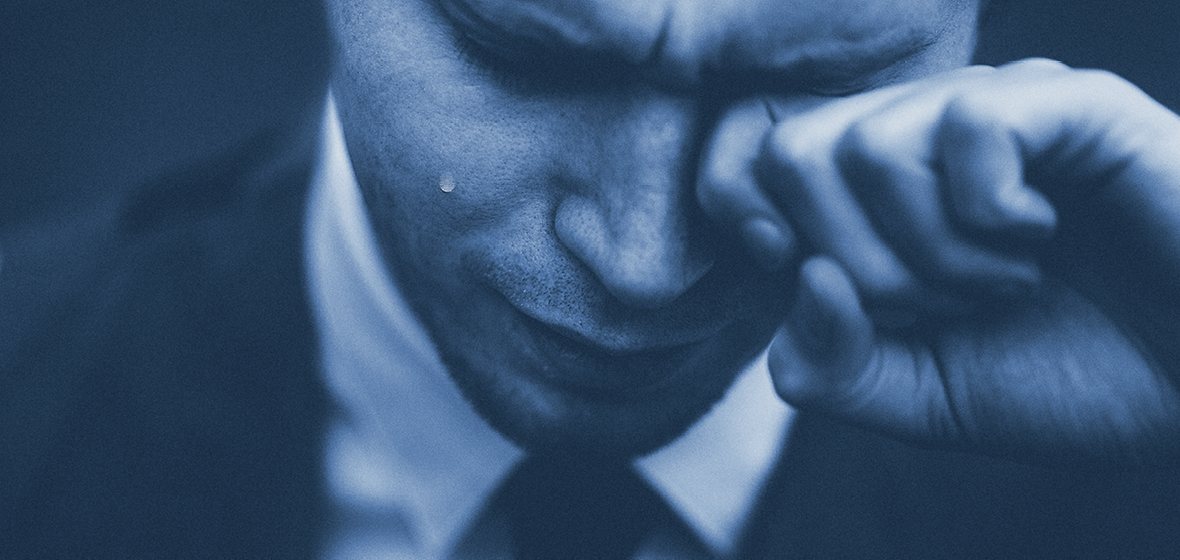It’s about reframing [wellbeing] from being some fluffy kind of add-on to how you feel as a person. It’s about making this valuable in your home life, not just in your work life.
When it comes to genuine wellbeing, it pays to move beyond box-ticking and approach wellness as a holistic, ongoing, and very human necessity – not just a work issue. And there is a need to move past box-ticking.
Annna-Louise Bouvier isn’t a lawyer, but many of her friends are. Even though she has been involved in developing award-winning wellbeing programs for more than 40,000 people in businesses such as Optus, the ASX, the University of Sydney, Lendlease, Caltex and Minter Ellison, and consulted to the Waratahs, Brumbies and Wallabies on overuse injuries, she’s sometimes met by a dose of lawyerly scepticism. “Every time I write something about wellbeing,” she says, “I can just see them going, ‘Oh, what a load of bullshit’.”
Bouvier deals with the cynicism by dialling into the human side of wellbeing. “I try to crack open the cynicism by asking how someone feels not as a lawyer but as a person,” she says. “If I go to a dinner party and see my lawyer mates and say, ‘How are you?’ – ‘Buggered’. ‘How do you sleep?’ – ‘Not enough’. ‘How is your mood?’ – ‘I’m grumpy with my family’. ‘How’s your stress?’ – ‘I feel like my head is about to blow off.’
“It’s about reframing [wellbeing] from being some fluffy kind of add-on to how you feel as a person. It’s about making this valuable in your home life, not just in your work life. Even so, I think out of all demographics and all sectors we’ve worked in, trying to create this journey in law firms is probably the hardest.”
These days, wellbeing is not just a conversation about supporting people, Bouvier believes. It’s about addressing identifiable risks. “As employers, the risks associated with work practices that have long been considered ‘acceptable’ in legal firms may no longer be so,” she says.
Bouvier believes that in every law firm there are two journeys. “There is the organisational journey, where the program has to address those risks, support behavioural change, provide clear financial value and be part of a longitudinal strategy, she says. Then there is the personal journey. “On a personal level, the program has to provide real value for that person.”
Paradoxically, given its high rates of anxiety and depression, the legal profession was a strong early proponent of wellness programs – though wellness wasn’t the original goal. In the mid-90s, firms were introducing Employee Assistance Programs, which were promoted primarily as part of a risk management strategy. EAPs, as they are known in shorthand, were often implemented as a reactive solution. They were invoked because of specific and often significant events, such as relationship issues within teams, performance issues, claims for psychological injury, or salary continuance claims.
“No one did it unless something had happened. Sadly, sometimes it took a suicide for an organisation to do something,” says Rachel Clements, co-founder of the Centre for Corporate Health in Sydney. “It was a time when companies would say, ‘Let’s have an EAP because if there’s an issue, we want to make sure we’ve got support for those individuals.’ It was a link to services that could help.”
Things started to change a decade ago when a 2007 Beyond Blue and Beaton Consulting report found that lawyers had the highest rates of depressive symptoms among all the professions. It created a line in the sand. As the Law Council of Australia noted, “The incidence of depressive symptoms amongst lawyers and law students had reached alarming levels. Respondents from law firms were also the most likely to use alcohol or other drugs to reduce or manage their symptomatology.”
Around the time the Beyond Blue report landed, Clements says the Resilience@law movement “just happened to be occurring and a lot of the large firms were getting together to look at firm-wide initiatives and trying to put mental health on the map”. The movement started as a collaboration between The College of Law and eight large law firms looking at issues of depression, stress and anxiety at all levels of the profession. When a lawyer tragically took his own life, the three events provided an important spur for the profession to address the issue in a meaningful way. “I would say that was the turning point,” says Clements. “I genuinely think firms are more caring now and it really is something they’re putting on their agenda. Secondly, [staffing] is quite competitive within law and having a wellbeing program is also about being an employer of choice, about setting your firm apart.”
Because EAPs were used when a person was particularly distressed, some firms have changed the way they frame their wellness programs. “Now, there doesn’t have to be a problem,” says Clements. “We can teach employees some wellbeing strategies. It’s about using wellness programs a bit more holistically so we can actually get good at keeping people well at work.”
 ANNA-LOUISE BOUVIER
ANNA-LOUISE BOUVIER
An obligation of care
Another trigger for greater consideration of workplace mental health came with the moves towards national harmonisation of work health and safety laws in 2012. Clements says firms started to evaluate certain roles within their organisations from a risk management perspective and while the initial drivers were legal and financial, organisations were motivated to mitigate any potential risks.
Corrs Chambers Westgarth partner and industrial law expert Jack de Flamingh says more employers now understand the importance of promoting a work environment that actually enhances an employee’s wellbeing. “Not only does that lead to a safer workplace and therefore compliance with safety laws, but it also enhances employee retention and productivity, and can facilitate diversity. Those types of issues underscore why mental health is so important in the workplace,” he says.
While de Flamingh’s perspective emerges primarily from the industrial and safety arenas, he says the primary duty under work, health and safety laws is to ensure health and safety is reasonably practicable, which extends beyond physical health and safety. The legislation expressly provides for this. “There is much greater engagement around mental health issues,” he says, “and an increasing acceptance that mental health needs to be managed much like physical health. Managing mental health is more complicated, but there is an increasing amount of useful literature to assist. Safe Work Australia, for example, has a fact sheet about preventing psychological injury under work, health and safety laws.”
Employers are also beginning to understand that their obligations extend to providing a stress-free workplace as part of their broader duty of care. “When it comes to wellbeing, employers need to have programs in place like an EAP service and various forms of training to assist employees manage their mental health,” says de Flamingh. “Programs we currently see with clients, and promote ourselves, include resilience training, trauma and compassion fatigue training, training that assists employees through life situations, and even leadership courses designed to better connect leaders with their teams.
“Aside from good practice, it’s an extension of the fact that an employer must ensure, so far as is reasonably practicable, the health and safety (and welfare) of employees. That necessarily entails having these types of training and services provided, because the risks are plainly foreseeable.”
 JACK DE FLAMINGH
JACK DE FLAMINGH
There is much greater engagement around mental health issues and an increasing acceptance that mental health needs to be managed much like physical health.
Both sides of the ledger
Despite the strides made in the area of wellness and EAPs, leaders in the legal profession, like in any business, want to know that the outcomes are worth the effort. Not to mention the expense: determining the return on investment of such strategies can be difficult, in part due to the multidimensional nature of what they are trying to address, which can cover everything from performance, productivity and absenteeism to workers’ compensation and salary continuation claims and helping attract and retain staff.
 RACHEL CLEMENTS
RACHEL CLEMENTS
Mental health issues are a huge cost. If you’re looking at a lawyer’s hourly rate and they are off work for three weeks or not functioning very well for a couple of months, the impact can be really significant.
While there are few specific, publically-available figures for the legal industry, a 2008 paper by Medibank Private concluded that the cost of workplace stress to the economy is $14.81 billion a year, costing employers $10.11 billion a year or 3.2 days per worker each year. Even the cost of insufficient sleep is considerable.
“Mental health issues are a huge cost,” says Clements. “If you’re looking at a lawyer’s hourly rate and they are off work for three weeks or not functioning very well for a couple of months, the impact can be really significant.”
On the other side of the ledger, a paper put out by ComCare, an Australian Government scheme that aims to have “a positive impact on reducing injury and harm” in the workplace, noted one study which found that, on average, the “economic return of worksite health promotion programs decreased sick leave absenteeism by 25.3 per cent; decreased workers compensation costs by 40.7 per cent; decreased disability management costs by 24.2 per cent; and saved $5.81 for every $1 invested in employee health and wellbeing.” A 2014 PwC report, meanwhile, noted that “for every dollar spent on successfully implementing an appropriate action, there is on average $2.30 in benefits to be gained by the organisation”.
The key to realising many of the benefits of investing in wellbeing is ensuring the efficacy of a program. “I think initially people just wanted to do something around wellbeing,” says Bouvier. “But now they’re looking at it more strategically. They’re asking whether it’s enough to have some PDFs on a website saying, ‘This makes you well’, or does it instead revolve around organisational structure, culture, the kind of leadership in a firm and getting people to become more aware of their roles, not only in the workplace but in their working life.”
Clements agrees, saying that a few years ago firms had to justify their budgets and spending on wellbeing but now, within the legal profession, it is so well assimilated that people understand it makes business sense.
While most large law firms in Australia have some sort of wellness plan, mid-sized and smaller firms, as well as sole traders and partnerships, don’t often have sufficient resources to administer wellbeing programs even though their employees suffer from the same health issues. But Clements says that smaller firms, which might not have a formal EAP or wellness program, can tap into offerings through the Law Society, counselling services run by Lifeline, or resources provided by other organisations, including Beyond Blue and the Black Dog Institute. “The good thing is that there’s a huge amount of awareness in the legal profession now,” says Clements.
Yet there is still a need to ensure people can access wellbeing programs when they need to. Bouvier says she is still seeing large numbers of people who are “just adrenally burnt out. It’s like Monty Python’s black knight. People just keep going back to work and saying, ‘It’s only a flesh wound’ but finally their body stops them or they end up with serious depression or mental health issues. If we can just intercede that little bit earlier, it’ll make a huge difference”.
For Clements, a lot of the problem comes from the legal profession’s high-performing, high-achieving culture. “It’s a challenge within the profession to really destigmatise mental and physical ill-health because people still are hesitant. Yes, we’re getting a lot more people coming forward than they did before but there is still that stigma around. In some part of the law, working long hours is not going to change. It’s creating the cultures that make it okay for someone to reach out, to put their hand up and say ‘I’m not coping’. It has definitely shifted a huge amount, but it can shift a lot more.”




